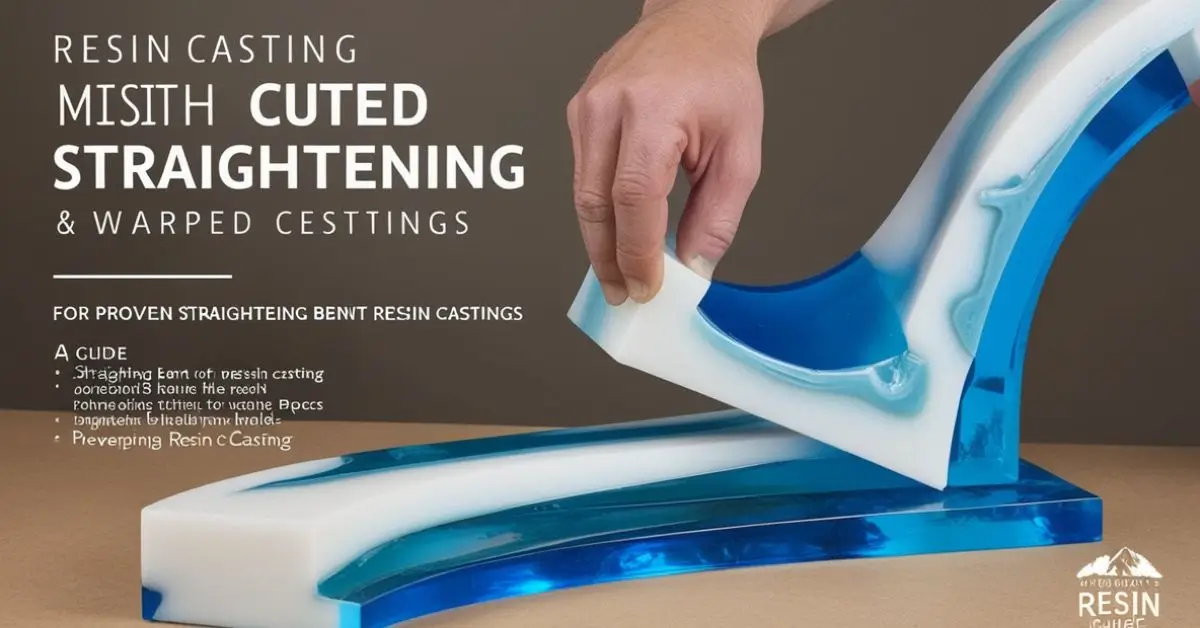How to Straighten Bent Resin Castings. Resin casting is a popular medium for creating intricate designs, models, and art pieces. However, a common challenge is dealing with bent or warped resin castings. Whether due to improper curing, heat exposure, or storage issues, these distortions can compromise the quality of your projects. This guide explores proven methods for straightening bent resin castings and provides practical tips for preventing future warping.
What Causes Resin Castings to Bend?
Resin casting requires precision and care. When certain conditions aren’t met, bending or warping can occur. Here are the primary causes:
- Temperature Fluctuations: Resin is sensitive to heat. Excessive heat during curing or storage can cause the material to soften and bend.
- Inadequate Curing: When resin doesn’t cure completely or evenly, it may remain partially flexible and prone to warping.
- External Stress: Improper handling or storage under pressure can lead to mechanical stress, which may distort the shape over time.
Understanding these causes helps identify the best solutions and avoid similar issues in the future.
Effective Methods for Straightening Bent Resin Castings
1. The Hot Water Method
The hot water method is a simple and effective way to reshape resin castings, especially for small to medium-sized pieces.
Materials Needed:
- A bowl of hot water
- A bowl of cold water
- Pliers or tweezers
Steps:
- Heat water until it is hot but not boiling, then pour it into a bowl.
- Submerge the bent resin piece in the hot water for 15–20 seconds. The heat will soften the resin, making it more pliable.
- Carefully remove the piece using pliers or tweezers to avoid burns.
- Straighten the piece by hand. Be gentle to avoid cracking or damaging intricate details.
- Immediately transfer the reshaped resin to a bowl of cold water. This will “set” the new shape.
Pros:
- Accessible and straightforward
- Works well for minor bends
Cons:
- Limited to smaller parts
- Risk of uneven reshaping if not handled carefully
2. Heat Gun or Hair Dryer Method
For larger or more intricate pieces, a heat gun or hair dryer offers more control over the heating process.
Materials Needed:
- Heat gun or hair dryer
- Heat-resistant surface
- Clamps or weights
Steps:
- Place the bent resin casting on a heat-resistant surface.
- Use a heat gun or hair dryer to apply heat evenly to the warped area. Maintain a safe distance to avoid overheating or burning the resin.
- Once the resin becomes flexible, carefully straighten the piece using your hands or tools.
- Hold the piece in its corrected shape and use clamps or weights to keep it steady as it cools.
Pros:
- Precise control over heat application
- Suitable for intricate or detailed pieces
Cons:
- Requires careful monitoring to avoid damage
- Can be time-consuming for large areas
3. The Oven Method
For larger or uniformly bent pieces, the oven method provides consistent heat to the entire casting.
Materials Needed:
- Oven
- Baking tray
- Parchment paper
- Flat objects or weights
Steps:
- Preheat your oven to a low temperature, typically around 110°C (230°F).
- Place the resin piece on a parchment-lined baking tray.
- Heat the piece in the oven for 5–10 minutes. Monitor it closely to ensure it doesn’t overheat or become overly pliable.
- Remove the piece from the oven and place it on a flat surface.
- Straighten the piece while it is still warm, then apply flat objects or weights to maintain the shape until it cools.
Pros:
- Even heat distribution
- Effective for large or complex shapes
Cons:
- Requires careful timing and monitoring
- May not be suitable for thin or delicate pieces
Comparison of Straightening Methods
| Method | Best For | Advantages | Disadvantages |
|---|---|---|---|
| Hot Water | Small to medium-sized pieces | Simple, cost-effective | Limited to smaller castings |
| Heat Gun/Dryer | Intricate or stubborn bends | Precise control, versatile | Requires patience, risk of overheating |
| Oven | Large, uniformly warped pieces | Even heating, good for larger items | Needs careful monitoring |
Tips for Successful Straightening
Straightening bent resin castings can be tricky, especially for intricate designs. Here are a few tips to improve your results:
- Test Small Areas First: Before applying heat to the entire piece, test a small section to ensure the method works as expected.
- Work Gradually: Apply heat incrementally to avoid over-softening the resin, which could lead to further warping.
- Avoid Overheating: Resin can scorch or bubble if exposed to excessive heat. Always use moderate temperatures.
- Use Protective Gear: Wear heat-resistant gloves or use tools like pliers to avoid burns.
Preventing Resin Warping
Prevention is always better than repair. Follow these tips to minimize the risk of resin castings bending:
- Cure Properly: Follow the resin manufacturer’s instructions for curing times and conditions. Ensure that the workspace is free from temperature fluctuations.
- Store Carefully: Keep finished resin pieces in a cool, dry environment. Avoid stacking heavy objects on top of delicate castings.
- Reinforce Thin Areas: Thin sections of resin are more prone to bending. Reinforce these areas during casting to improve durability.
Why Prevention Matters
Straightening resin castings can take time and effort. Preventing warping in the first place not only saves time but also maintains the integrity of the design. By implementing the right curing, storage, and handling practices, you can ensure that your resin projects stay in top condition.
Visual Learning
For a clearer understanding of how to straighten bent resin castings, video tutorials can be invaluable. Look for demonstrations that show the methods described above step by step. A quick online search for “straightening resin castings tutorial” will yield many helpful results.
Conclusion
Bent resin castings can be a frustrating setback, but with the right methods, they are entirely fixable. Whether you use hot water, a heat gun, or an oven, each approach offers a practical solution for restoring your resin pieces to their original form. Remember to take preventive measures during the curing and storage phases to avoid future warping. By applying these techniques, you’ll ensure your resin projects remain stunning and durable for years to come.












